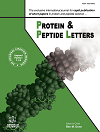- Home
- A-Z Publications
- Protein and Peptide Letters
- Previous Issues
- Volume 23, Issue 8, 2016
Protein and Peptide Letters - Volume 23, Issue 8, 2016
Volume 23, Issue 8, 2016
-
-
Anionic Host Defence Peptides from the Plant Kingdom: Their Anticancer Activity and Mechanisms of Action
More LessIt is becoming increasingly clear that plants ranging across the plant kingdom produce anionic host defence peptides (AHDPs) with potent activity against a wide variety of human cancers cells. In general, this activity involves membrane partitioning by AHDPs, which leads to membranolysis and / or internalization to attack intracellular targets such as DNA. Several models have been proposed to describe these events including: th Read More
-
-
-
Wasp Venom Toxins as a Potential Therapeutic Agent
More LessAuthors: Yashad Dongol, Bhadrapara L. Dhananjaya, Rakesh K. Shrestha and Gopi AryalIt is high time now to discover novel drugs due to the increasing rate of drug resistance by the pathogen organisms and target cells as well as the dependence or tolerance of the body towards the drug. As it is obvious that significant numbers of the modern day pharmaceuticals are derived from natural products, it is equally astonishing to accept that venoms of various origins have therapeutic potentials. Wasp venoms are al Read More
-
-
-
Ribosome-inactivating Proteins from Root Tubers and Seeds of Trichosan-thes kirilowii and Other Trichosanthes Species
More LessAuthors: Xiujuan Ye, Charlene C.W. Ng, Jack H. Wong, Tzi B. Ng, Gabriel H.H. Chan, Suzhen Guan and Ou ShaRibosome-inactivating proteins have been isolated from Trichosanthes kirilowii root tubers and seeds, including trichosanthin, karasurin and T 33 from root tubers and trichosanthrip, trichokirin, alpha-kirilowin, beta-kirilowin and trichoanguin from seeds. The aforementioned proteins show structural and functional similarities. Among them trichosanthin is the best known and most intensely studied. Trichosanthin manifests a Read More
-
-
-
Insights into Antimicrobial Peptides from Spiders and Scorpions
More LessAuthors: Xiuqing Wang and Guangshun WangThe venoms of spiders and scorpions contain a variety of chemical compounds. Antimicrobial peptides (AMPs) from these organisms were first discovered in the 1990s. As of May 2015, there were 42 spider's and 63 scorpion's AMPs in the Antimicrobial Peptide Database (http://aps.unmc.edu/AP). These peptides have demonstrated broad or narrow-spectrum activities against bacteria, fungi, viruses, and p Read More
-
-
-
The Amazing World of Peptide Engineering: the Example of Antimicrobial Peptides from Frogs and Their Analogues
More LessThis review discusses the importance and properties of antimicrobial peptides from frogs and their synthetic analogues as potential therapeutic alternatives in fighting not only bacterial infections, but also protozoans involved with the major neglected diseases, which afflict human populations (e.g., Chagas disease, African sleeping sickness, Leishmaniasis and malaria). Here, we emphasize their multifunctional properties such a Read More
-
-
-
C-terminal Lysine-Linked Magainin 2 with Increased Activity Against Multidrug-Resistant Bacteria
More LessDue to the growing problem of antibiotic-resistant microorganisms, the development of novel antimicrobial agents is a very important challenge. Dimerization of cationic antimicrobial peptides (cAMPs) is a potential strategy for enhancing antimicrobial activity. Here, we studied the effects of magainin 2 (MG2) dimerization on its structure and biological activity. Lysine and glutamic acid were used to synthesize the C- and N-ter Read More
-
-
-
Activities of Venom Proteins and Peptides with Possible Therapeutic Applications from Bees and WASPS
More LessThe variety of proteins and peptides isolated from honey bee venom and wasp venom includes melittin, adiapin, apamine, bradykinin, cardiopep, mast cell degranulating peptide, mastoparan, phospholipase A2 and secapin. Some of the activities they demonstrate may find therapeutic applications.
-
-
-
Induced Folding Under Membrane Mimetic and Acidic Conditions Implies Undiscovered Biological Roles of Prokaryotic Ubiquitin-Like Protein Pup
More LessAuthors: Kaiqin Ye, Xiaoming Tu, Xuecheng Zhang, Qiang Shang, Shanhui Liao, Jigang Yu and Jiahai ZhangUbiquitin-like proteins play important roles in diverse biological processes. In Mycobacterium tuberculosis, Pup (prokaryotic ubiquitin-like protein), a functional homologue of eukaryotic ubiquitin, interacts with the proteasome ATPase subunit Mpa to recognize and unfold substrates, and then translocate them into the proteasome core for degradation. Previous studies revealed that, Pup, an intrinsically disordered protein (IDP), Read More
-
-
-
High-Level Secretory Expression and Purification of Recombinant Human Interleukin 1 Beta in Pichia pastoris
More LessAuthors: Pengfei Li, Ganggang Yang, Xiaofang Geng, Jinbao Shi, Bin Li, Ze Wang, Quanyi Zhang, Yajuan Yang and Cunshuan XuAs an important pro-inflammatory cytokine, interleukin-1beta (IL-1β) participates in a variety of physiological and pathological responses. In order to obtain higher yielded recombinant human interleukin-1 beta (rhIL-1β), we cloned hIL-1β cDNA sequences based on the coding sequence of human mature IL-1. After recombinant pPICZA/hIL-1β was separated and sequenced, we transformed recombinant pPICZA/hIL-1β into P Read More
-
Volumes & issues
-
Volume 32 (2025)
-
Volume 31 (2024)
-
Volume 30 (2023)
-
Volume 29 (2022)
-
Volume 28 (2021)
-
Volume 27 (2020)
-
Volume 26 (2019)
-
Volume 25 (2018)
-
Volume 24 (2017)
-
Volume 23 (2016)
-
Volume 22 (2015)
-
Volume 21 (2014)
-
Volume 20 (2013)
-
Volume 19 (2012)
-
Volume 18 (2011)
-
Volume 17 (2010)
-
Volume 16 (2009)
-
Volume 15 (2008)
-
Volume 14 (2007)
-
Volume 13 (2006)
-
Volume 12 (2005)
-
Volume 11 (2004)
-
Volume 10 (2003)
-
Volume 9 (2002)
-
Volume 8 (2001)
Most Read This Month
Article
content/journals/ppl
Journal
10
5
false
en


